Author:@Vincefocused
From:@AW_Research
AI Summary
Museum Heist is a fully on-chain social game based on the MUD engine and ZKSnark technology. This article provides a brief introduction to the game's basic content and gameplay, giving readers a preliminary understanding of the game. It then introduces the team members involved in developing the game, specifically @yyyoisha, @SinestiaETH, and @0xyoyoismee . Furthermore, based on publicly available information, we learn why and how Museum Heist incorporates ZKSnark technology into the game. Finally, a detailed gameplay guide is provided, offering users a step-by-step experience of the game.
Game Introduction
Museum Heist is a fully on-chain social game that started closed beta testing in January 2023, built on the Mud engine.
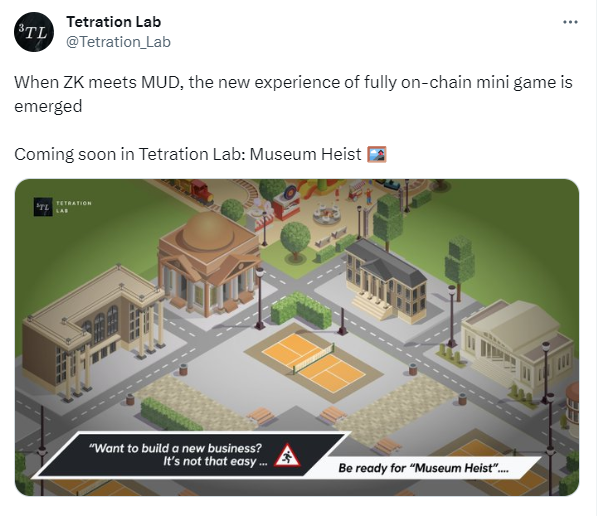
In Museum Heist, players begin as museum curators, each owning 10 artifacts. The more artifacts a museum collects, the more points the player earns each round. The game is divided into two phases: day and night. During the day, players calculate their scores based on the number of artifacts in their museum and can report other players they suspect of stealing during the night. The night phase is dedicated to player actions, allowing each player to engage in theft activities. The game alternates between day and night until a player reaches the victory score requirement, ending the game.
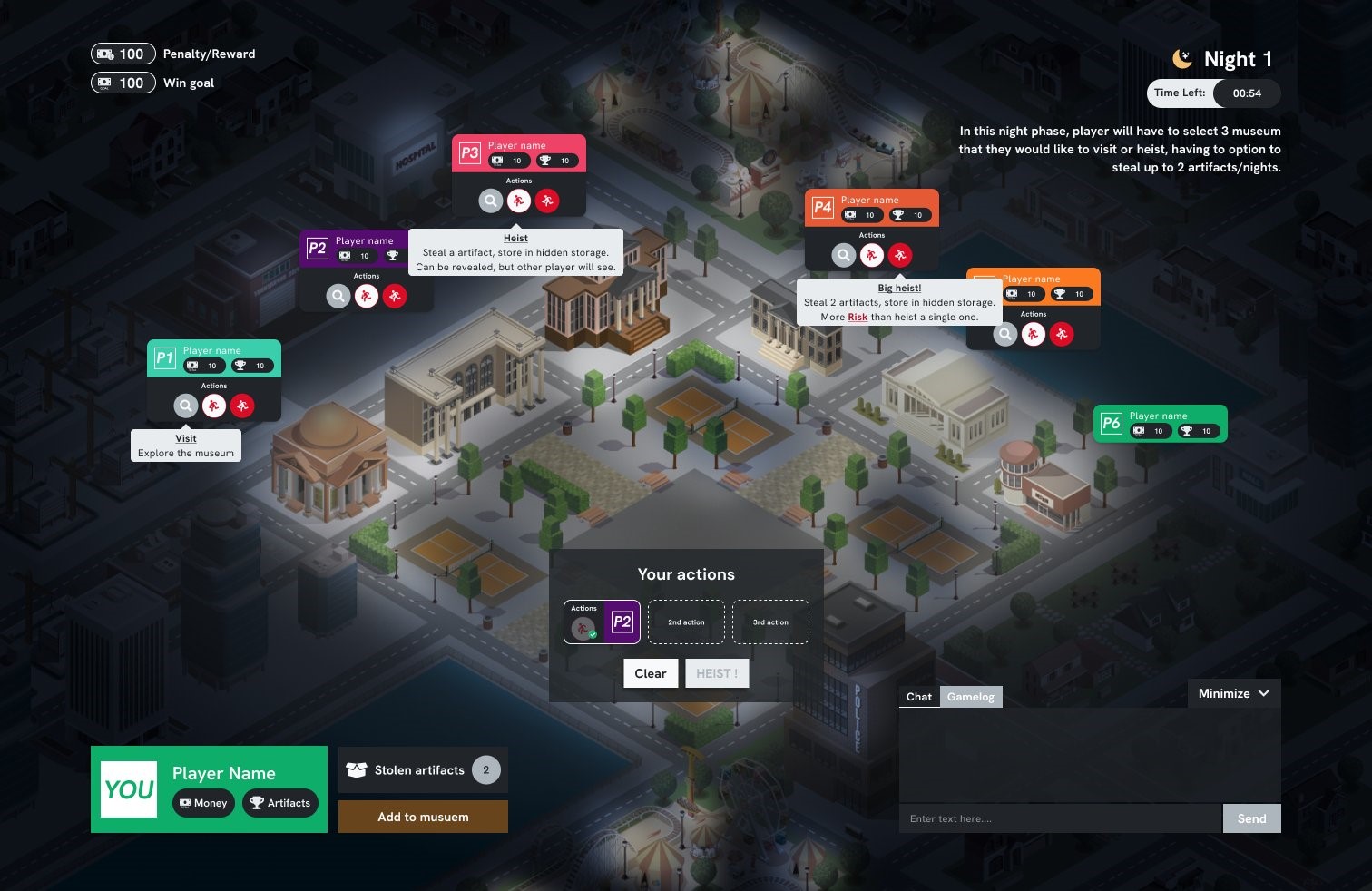
Team Background
Team Vision
Museum Heist is a fully on-chain game developed under Tetration Lab. The team was initially inspired by the concept of "autonomous worlds" proposed by @Latticexyz and @0xPARC. Their goal is to research and develop truly disruptive solutions in the blockchain gaming industry, providing genuine value to users and partners instead of simply stacking existing technologies. Ultimately, they aim to become leaders in the blockchain industry.
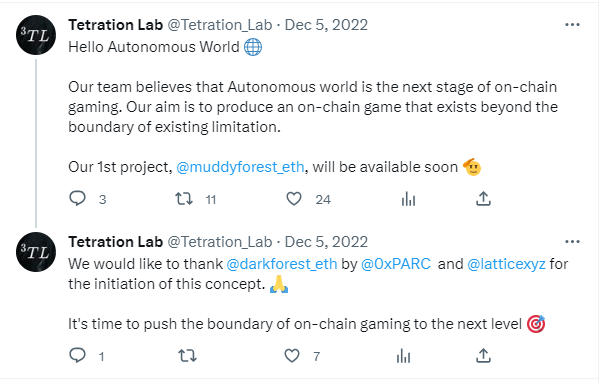
Core Team Members
According to public information from Tetration Lab, one of the core team members is @SinestiaETH, who is not only a co-founder of Tetration Lab but also the founder of apebook_nft, an NFT data platform where users can discover NFT projects and explore their advantages.
@0xyoyoismee is a core technical developer at Tetration Lab and co-founder of Speedboat_STDO, a no-code NFT generator that allows non-developers to create their own NFTs without writing code.
@yyyoisha, the founder of Tetration Lab, primarily works as a blockchain engineer, focusing on technologies such as Cosmos/ZK/autonomous worlds.
Games
Tetration Lab has currently developed three games: Frosty Fights, Museum Heist, and Muddy Forest.
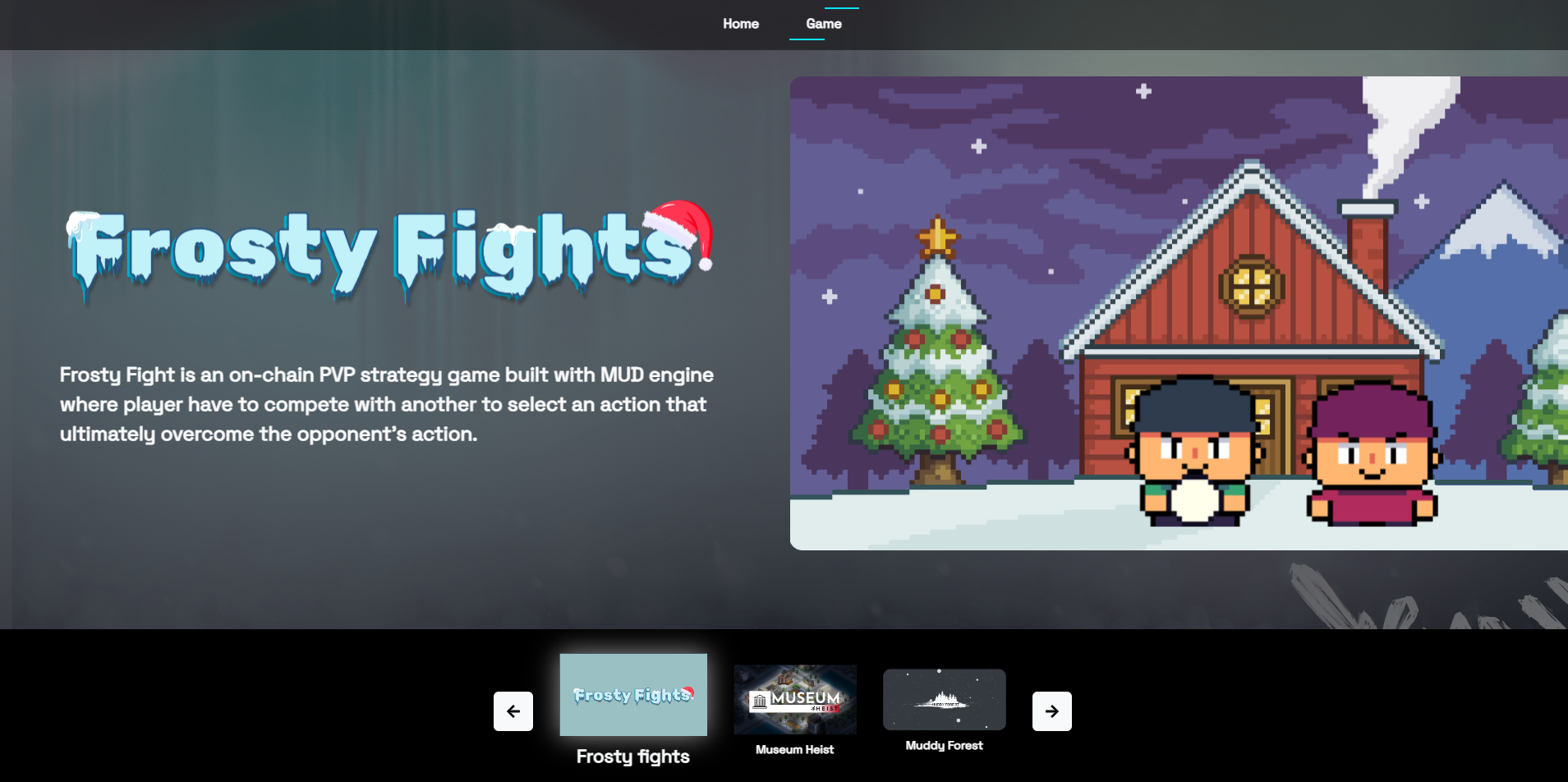
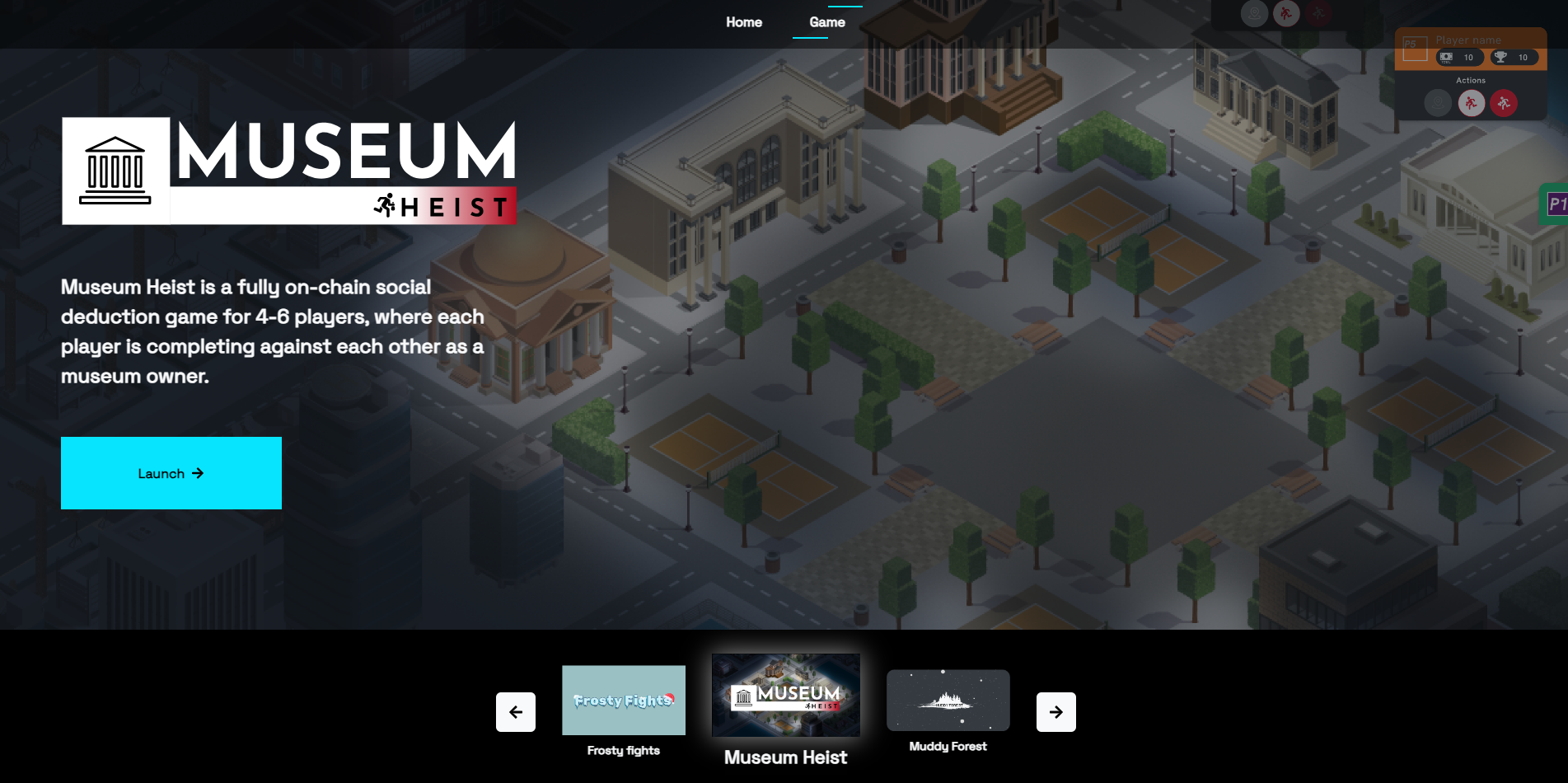

Ecosystem Involvement
According to the documentation provided by Tetration Lab, Museum Heist is a fully on-chain social role-playing game that combines the Mud engine with ZKSnark technology. As stated by the team members, the initial inspiration for forming this team came from the concept of "autonomous worlds" proposed by @Latticexyz and @0xPARC. Developing a role-playing social game on the blockchain presents challenges in maintaining the anonymity of each player's identity. In the blockchain world, there is no centralized authority controlling access to individuals' information. Additionally, the transparency of blockchain smart contracts makes personal information, gameplay actions, player identities, and even game outcomes potentially exposed before they should be. This increases the difficulty of game development.
The original fully on-chain game, Dark Forest, was a real-time online strategy game that used zero-knowledge proofs to hide the coordinates of planets on the game map, creating a fog-of-war effect.The team was inspired by this and developed this fully on-chain social role-playing game based on ZKSnark technology. The game aims to address the issue of how to hide player information in blockchain games. By utilizing ZKSnark technology, the game allows the execution of certain tasks without knowledge of the original state or intermediate transformation paths. This enables the game to restrict actions involving private read-write access and increases the flexibility of state transitions.
Gameplay Introduction
In Museum Heist, players can join other rooms online to experience the game or create their own rooms and invite friends to play.
Step 1: Create an Account
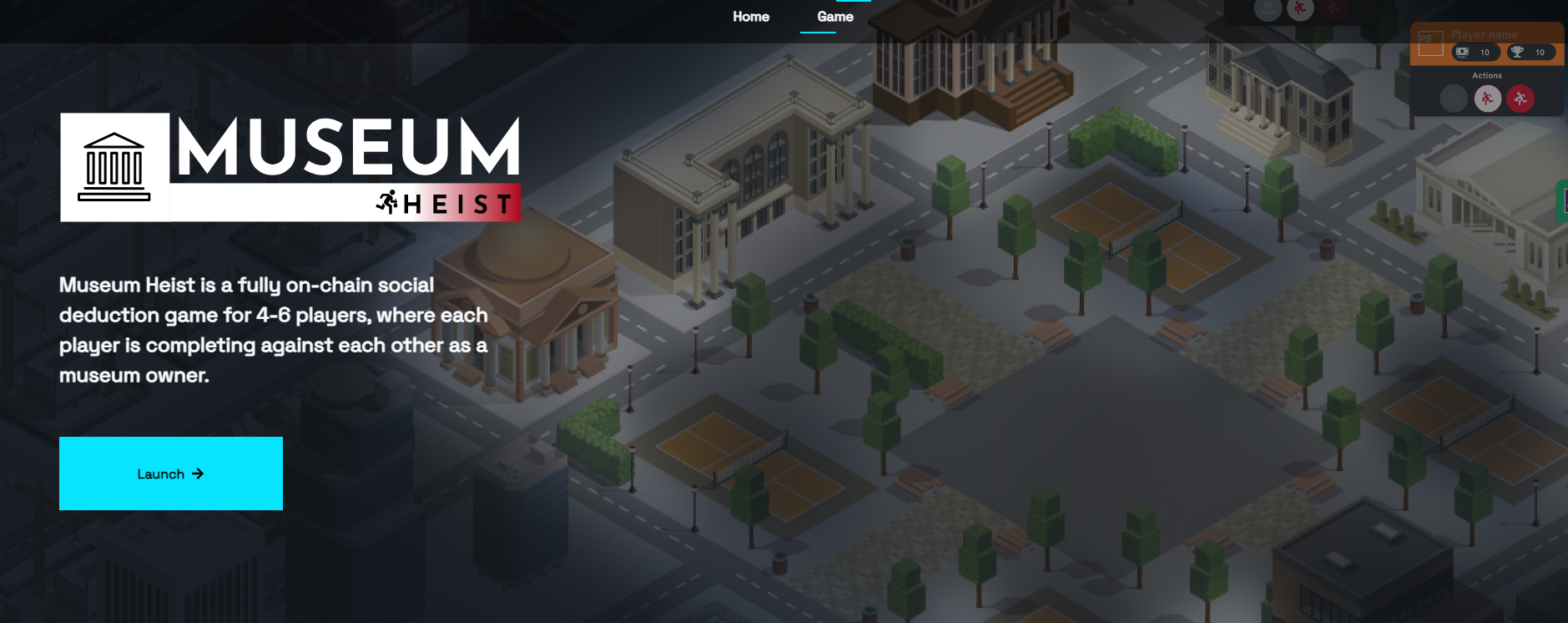
Click "LAUNCH" to enter the game and set a name.
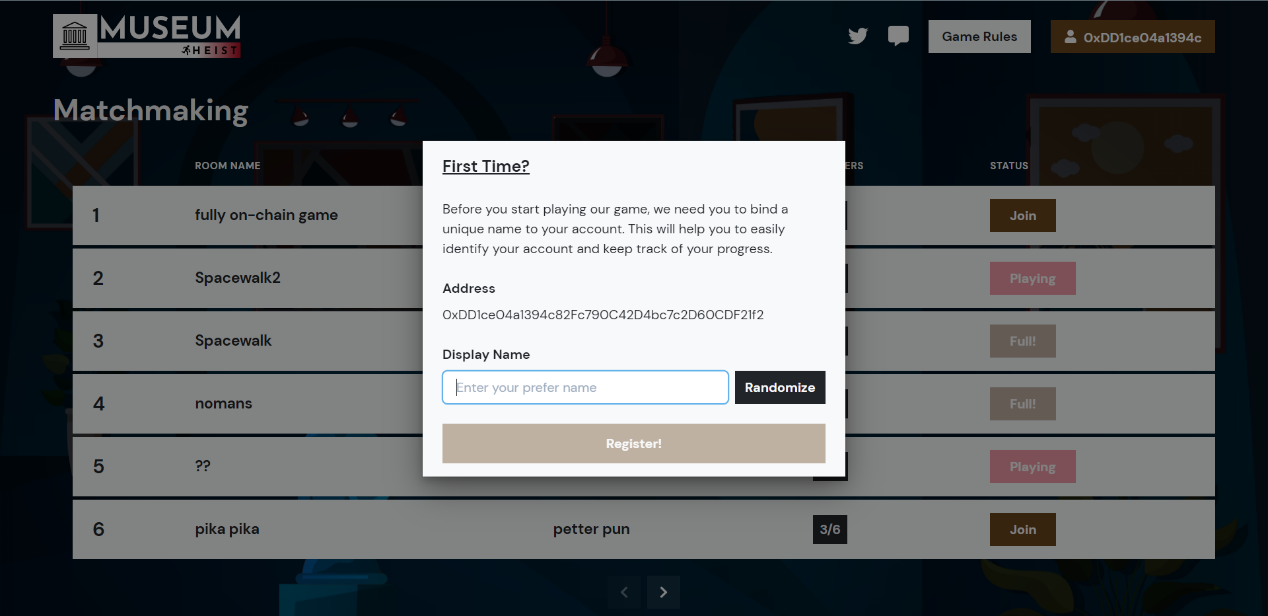
Step 2: Users can choose to join other rooms to play or create their own custom rooms. However, a minimum of 4-6 players is required to start the game.

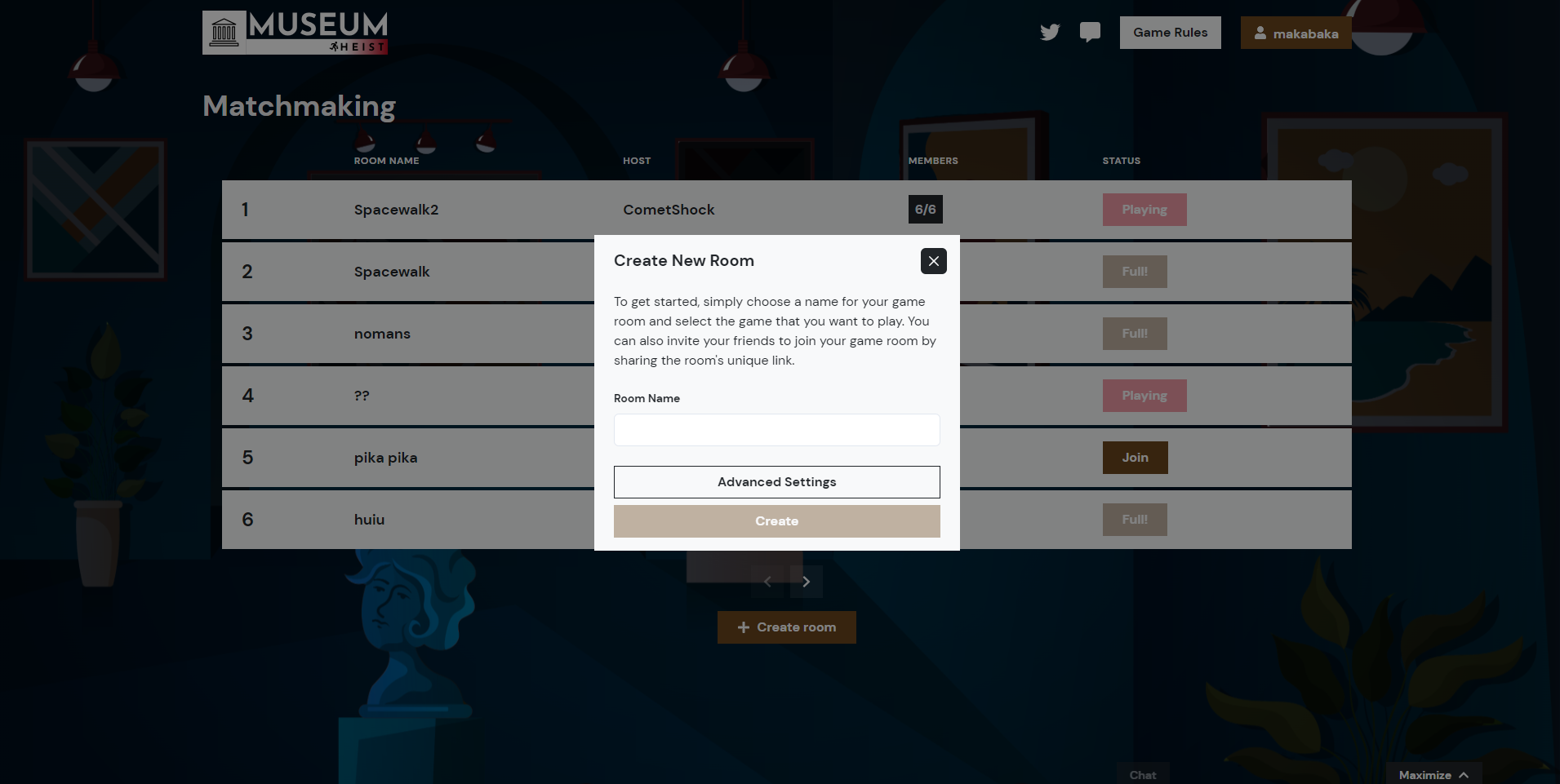
When creating a room, users can also make advanced settings and customize game rules according to their preferences.
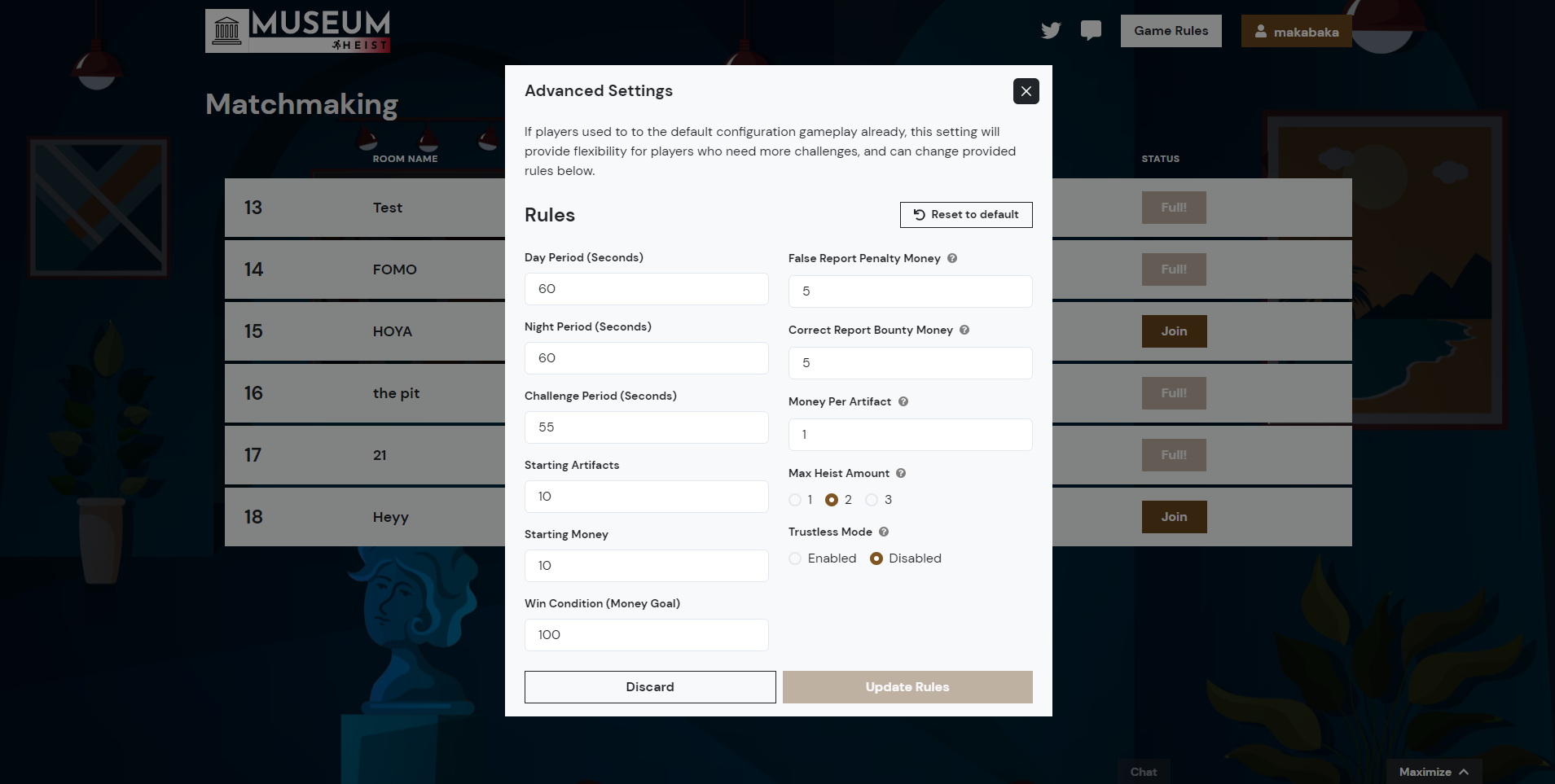
Once there are 4 or more players, click "Start" to begin the game.

Step 3: Upon entering the game, players are presented with the daytime scene (the official website whitepaper mentions nighttime, but I personally experienced it as daytime). Four museums can be seen, and the countdown for daytime is displayed in the top right corner. After the time runs out, the game transitions to nighttime.

During nighttime, each player can choose to visit, steal from, or rob up to 3 other players, earning artifact points.
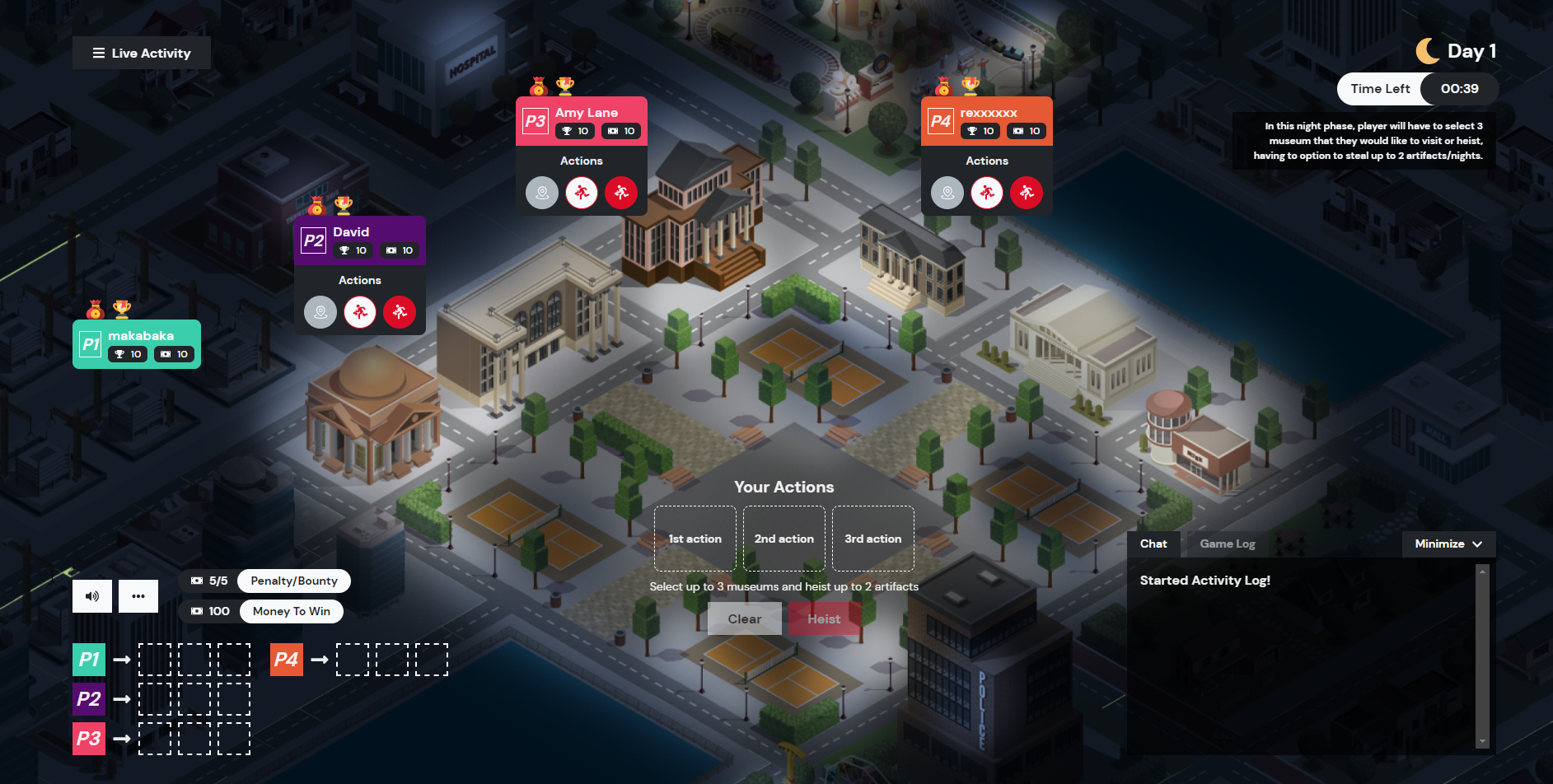

Step 4: After players complete their actions at night, the daytime phase displays the results of the previous night. Each player can report suspicious activities. If a stealing player is reported, their stolen points from the previous night will be deducted. If not caught, they will receive the corresponding points.

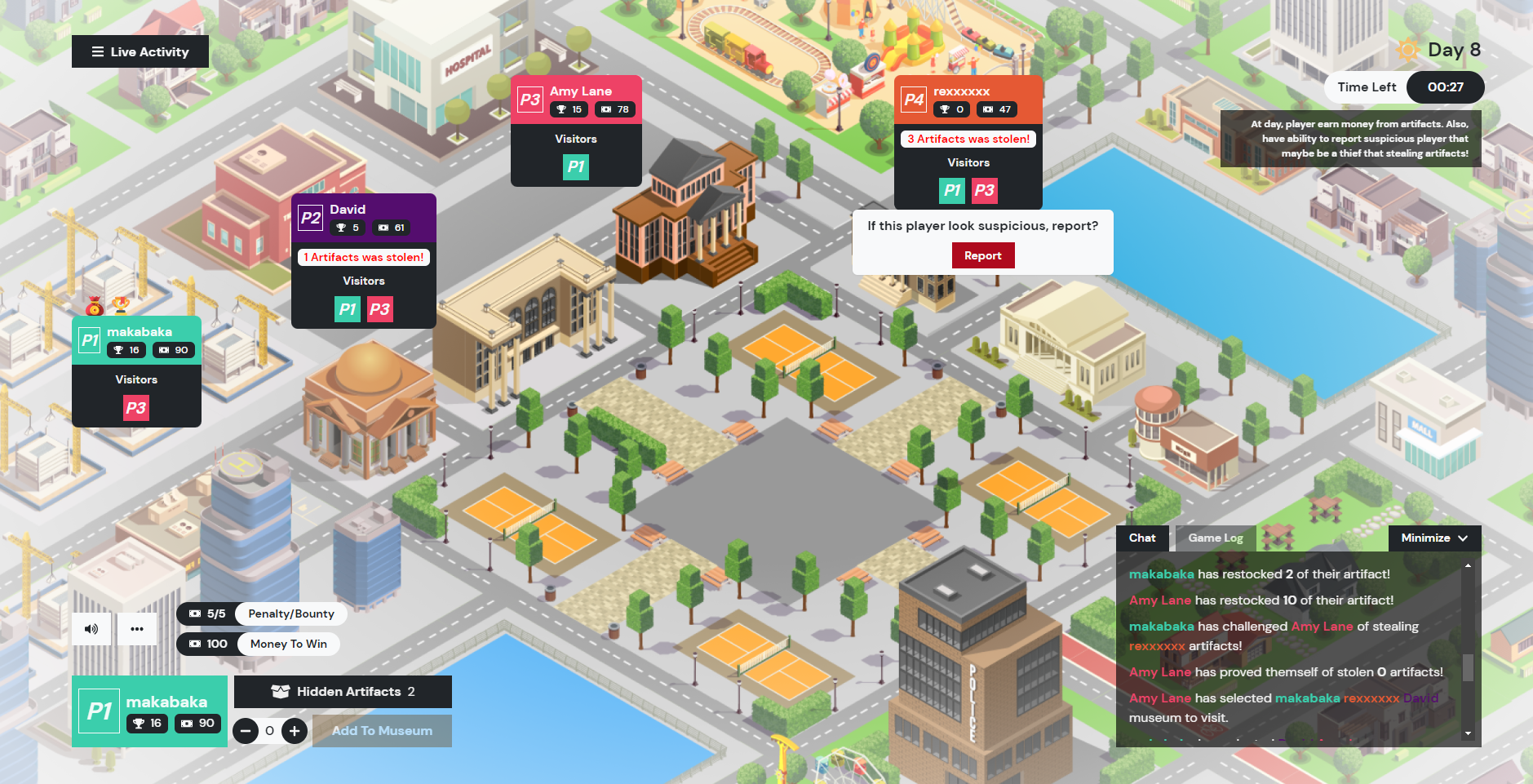
Step 5: By cycling through daytime and nighttime, each player earns a certain amount of points. The game ends when a player reaches the victory point requirement set at the beginning of the room creation. Currently, after the game ends, players can fill out a survey, providing feedback and information about the game, which may potentially lead to rewards in the future (speculation).

Game Impressions
-
The game's overall visual presentation is clear, and compared to other fully on-chain games, it has a higher level of completion. The gameplay process is smooth, without any lag issues, providing a good user experience.
-
The game adopts a PvP (Player versus Player) mode, and the competition between players is the core gameplay element. The strategic competition among players adds to the game's excitement, making players want to continue playing after each round ends.
-
After experiencing the entire process, I found that this game is very similar to the Werewolf game mode, with a reduced number of roles and faster-paced rounds.
-
Returning to the essence of fully on-chain games, this game utilizes Mud and ZKSnark technology. Although the game doesn't have explicit wallet interaction, it can be inferred that ZKSnark technology is applied during the nighttime theft and daytime voting phases. Further research is needed to understand why there is no wallet interaction like in other fully on-chain games.
-
Currently, the gameplay is relatively simple, revolving around the alternating daytime and nighttime robbery and voting activities. Prolonged gameplay may lead to aesthetic fatigue, so introducing more diverse gameplay elements in each round could be considered for the future.
Appendix
Tetration Lab Twitter:
Tetration Lab Discord:
Game Official Website:
References
Museum Heist Technical Introduction:
Museum Heist Whitepaper: